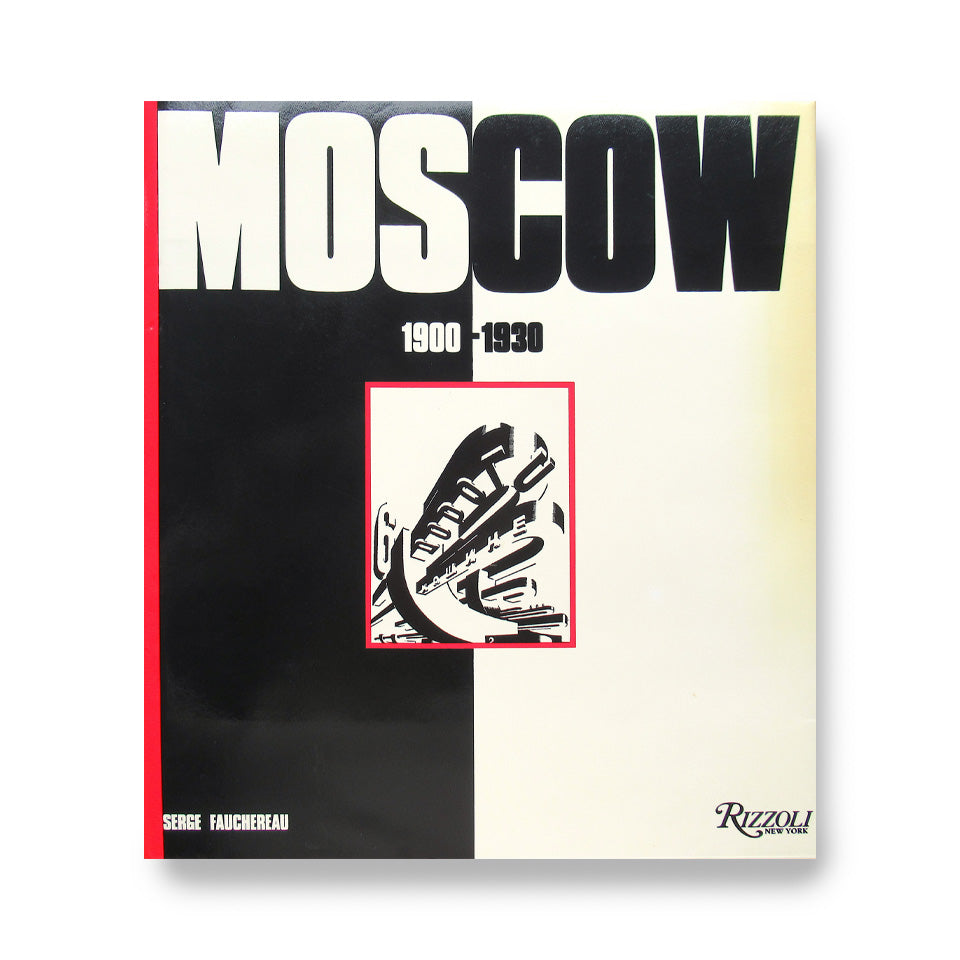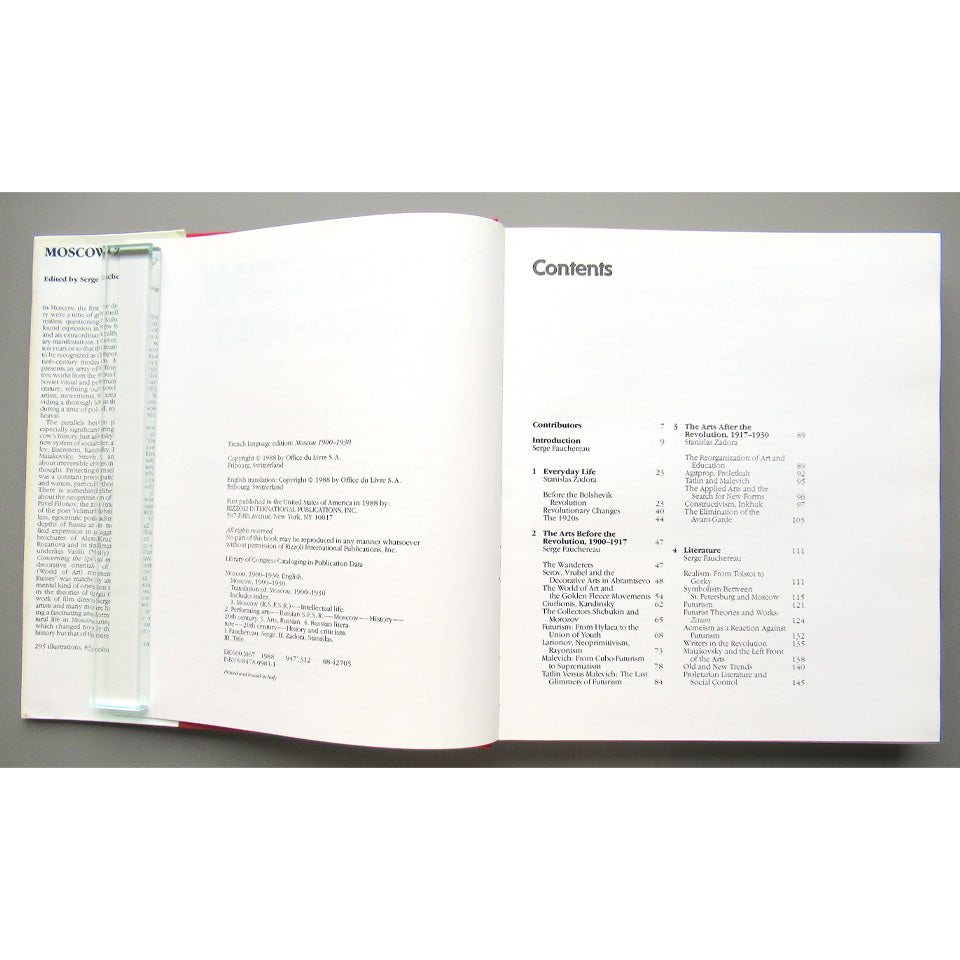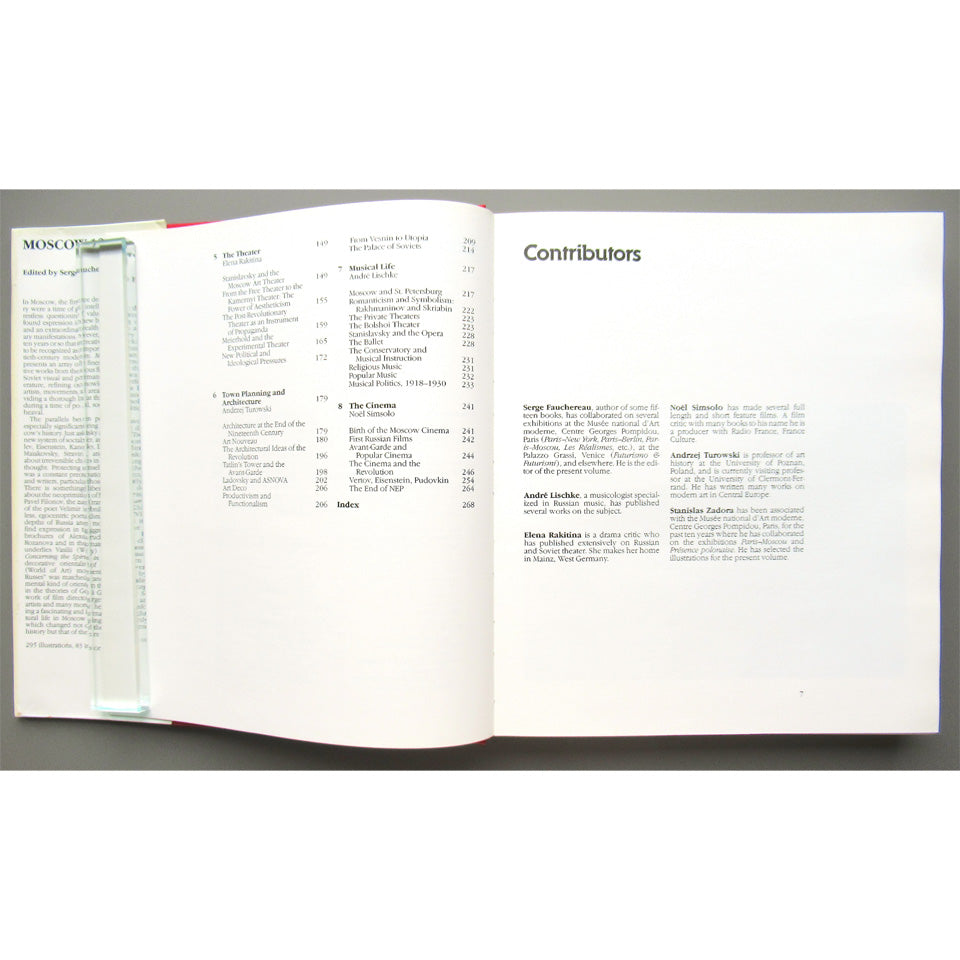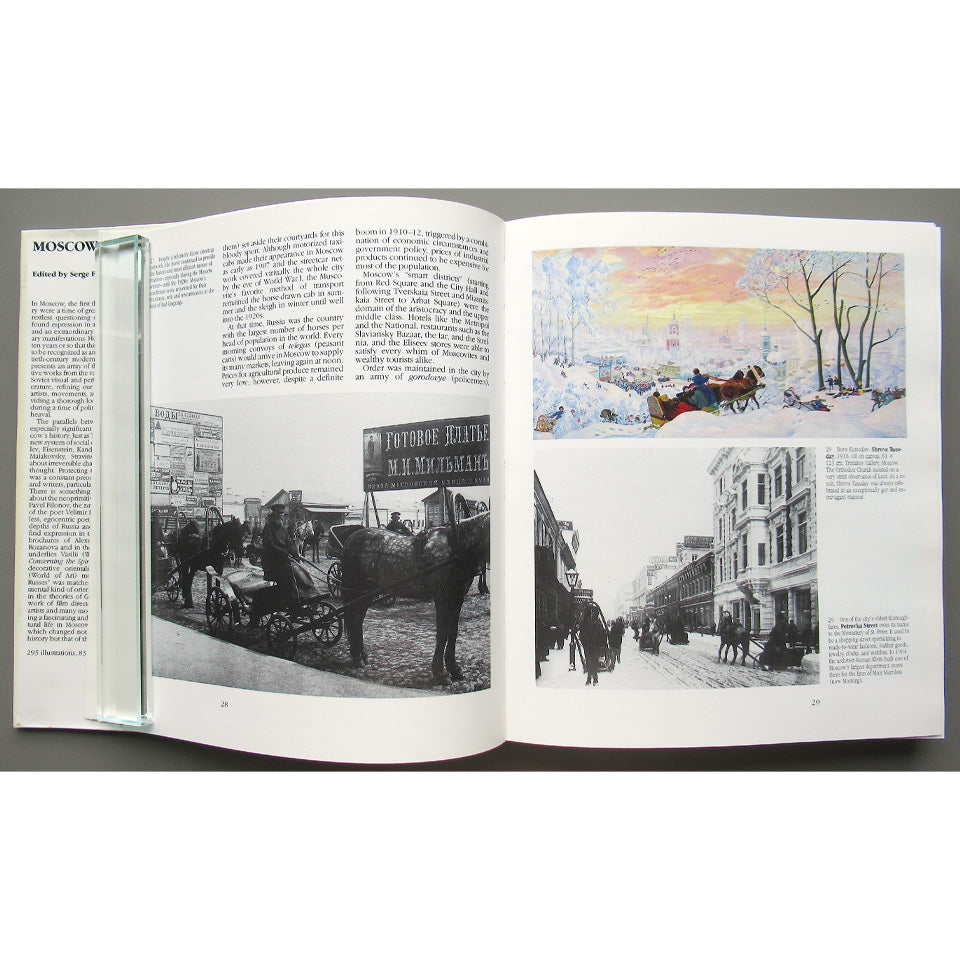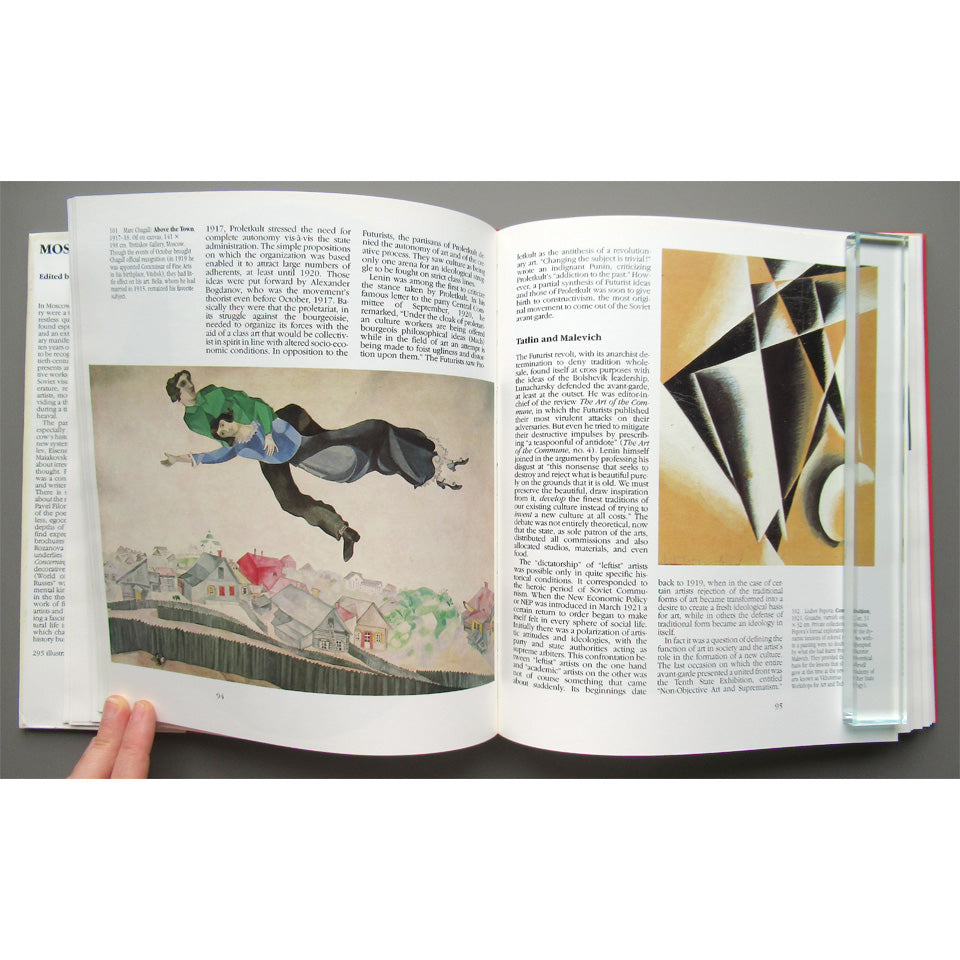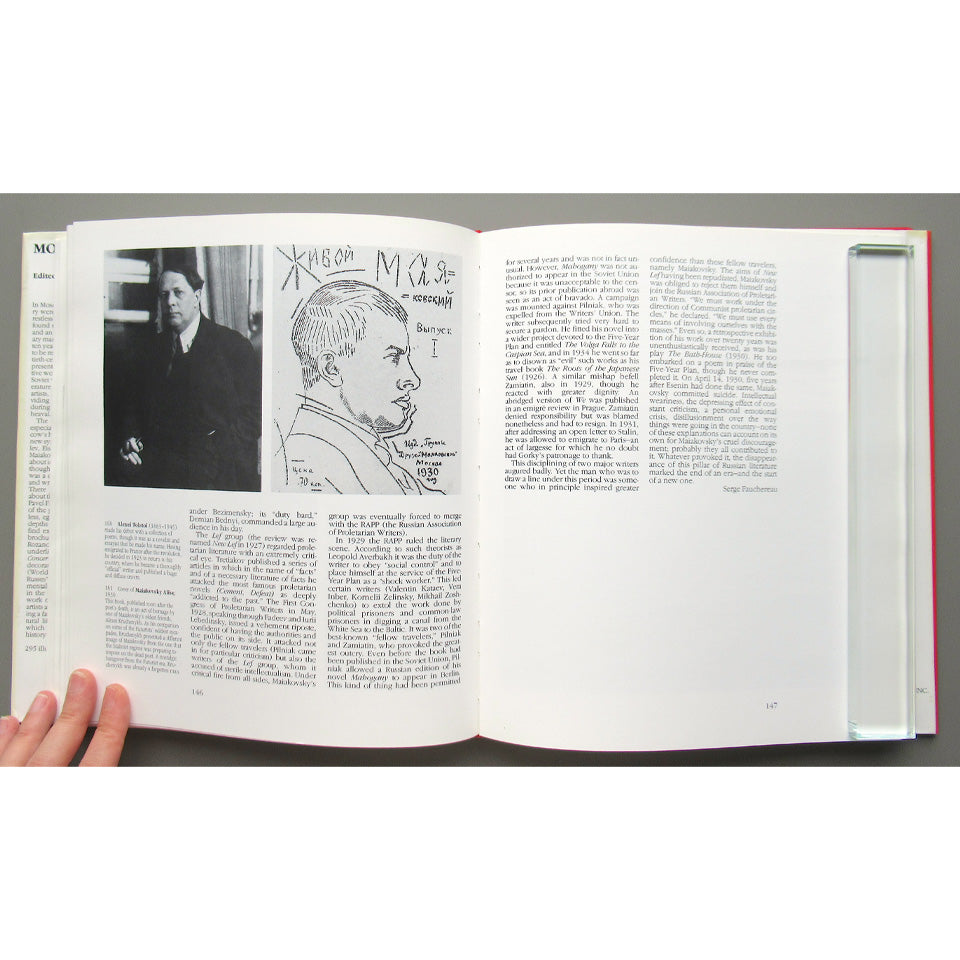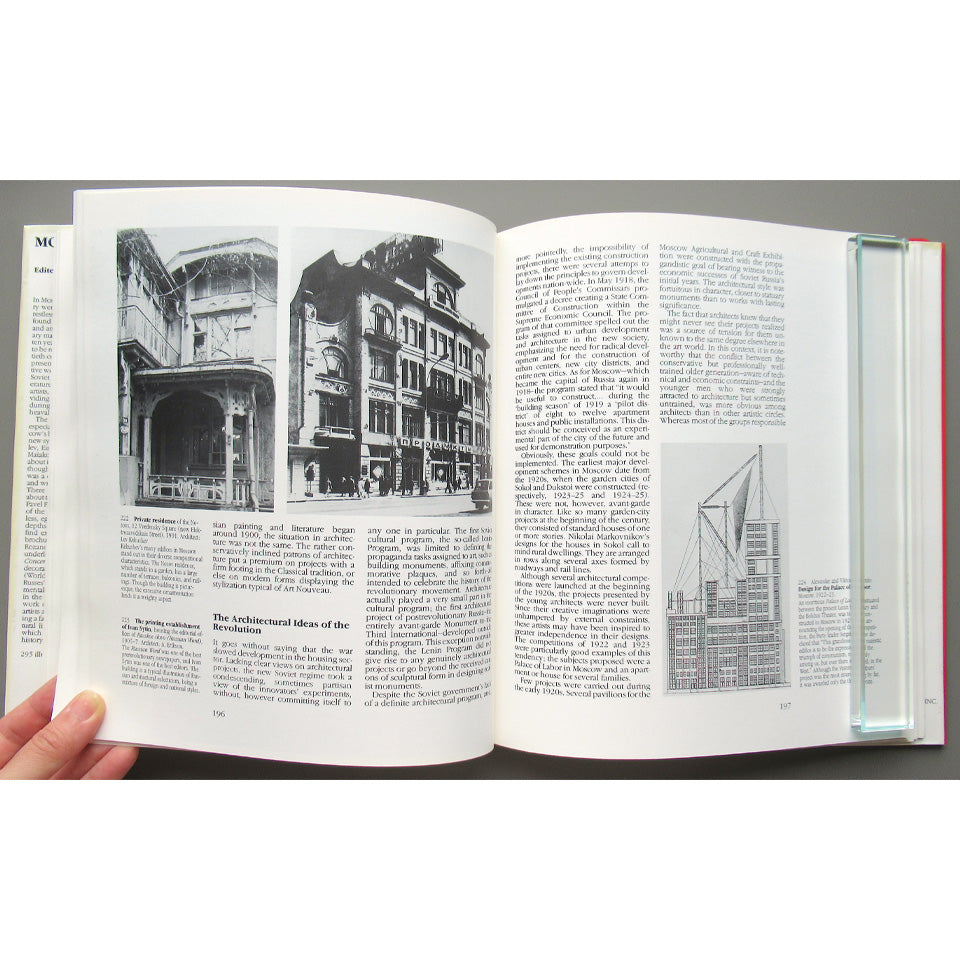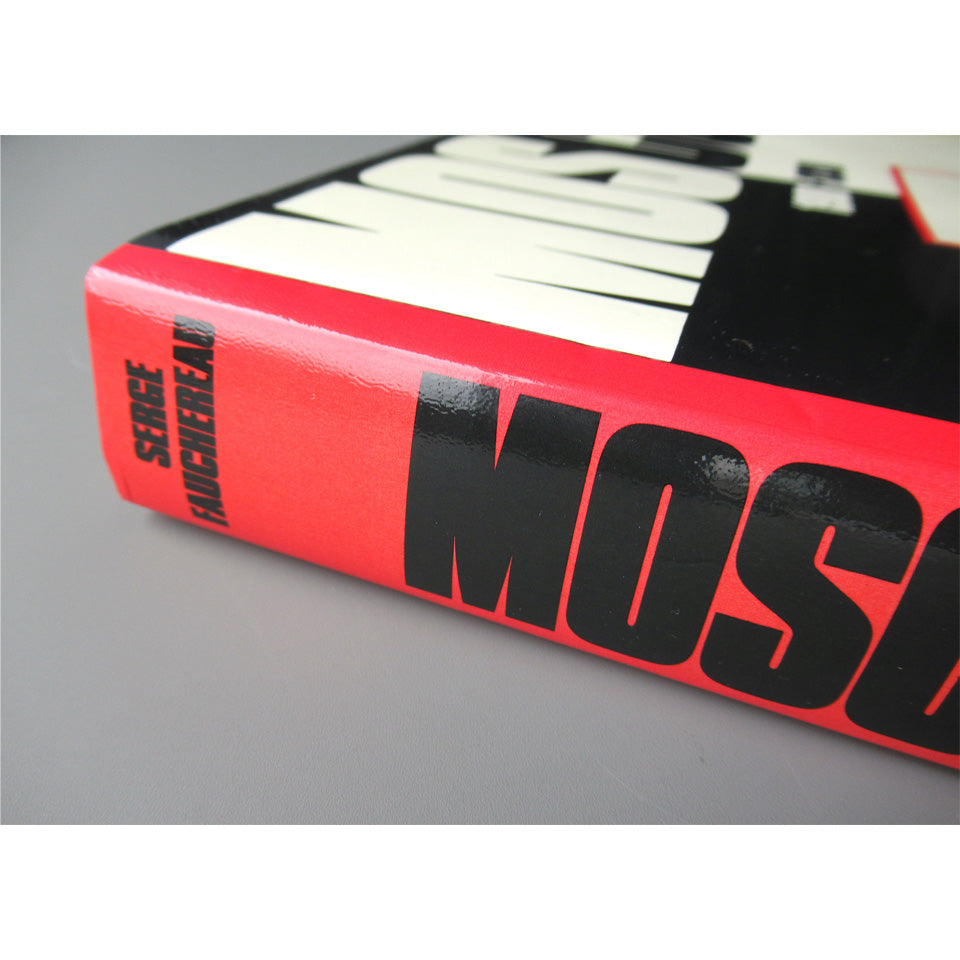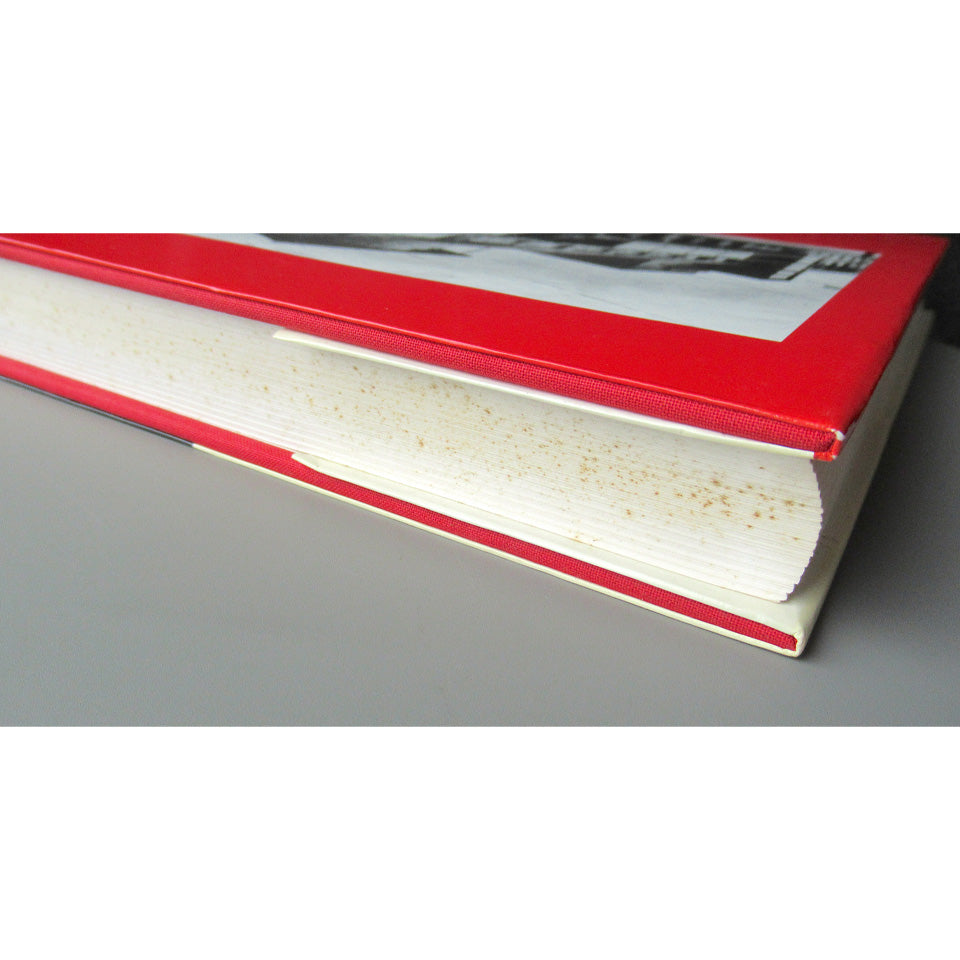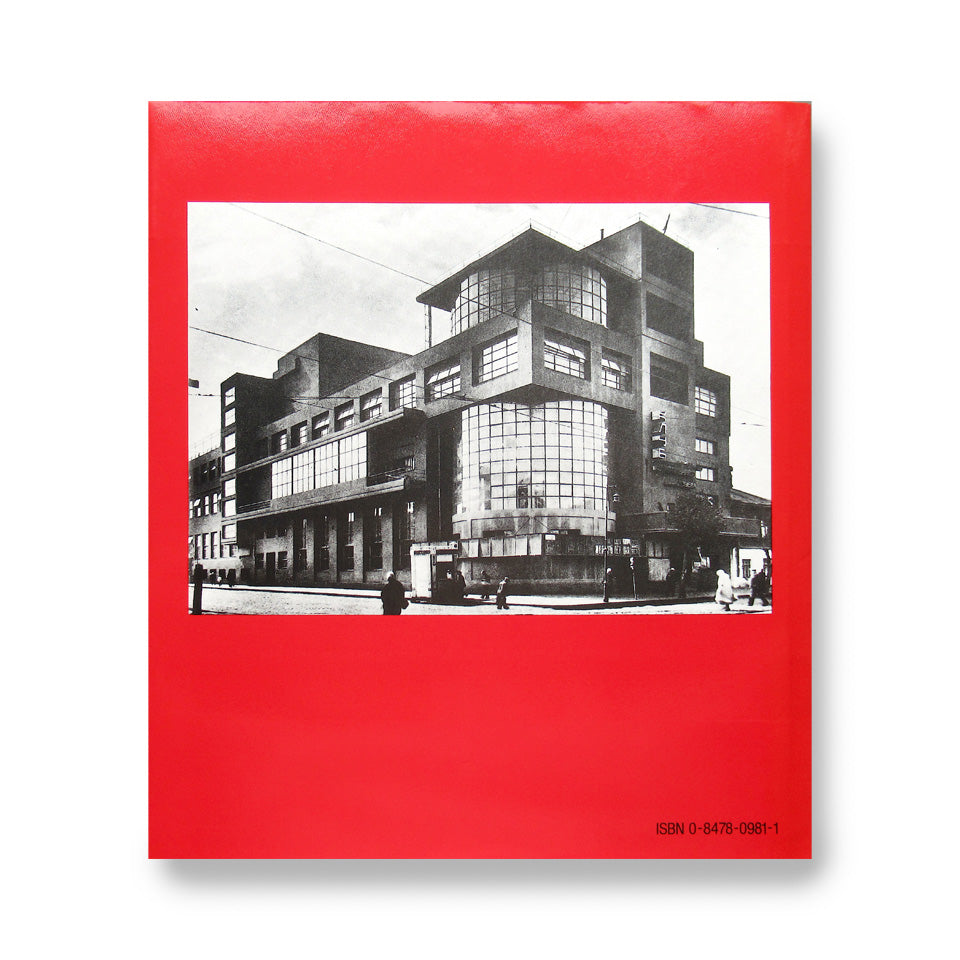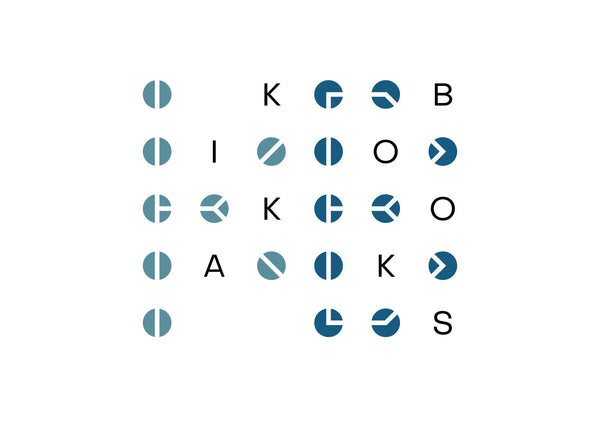Moscow 1900-1930
Moscow 1900-1930
Couldn't load pickup availability
Moscow 1900-1930
Edited by: Serge Fauchereau
Publisher : Rizzoli/Mallard Press
Size : 233mm×269mm×34mm
Year of publication: 1988
Number of pages: 275 pp
Language : English
Condition : C
There are scratches, creases, and discoloration on the whole, but it does not interfere with reading.
Contains signs of wear and tear with brown spots on the top edge and yellowed pages, but overall book is in good condition.
Content
__________________________________
This is a belated companion to the "Paris-Moscou 1900-1930" exhibit, held in Paris in 1979, which documented Moscow's life as a vibrant commercial center with a culture distinct from St. Petersburg/Leningrad. The articles (by various authors) on theater, architecture, music, and cinema succeed in delineating characteristic Muscovite traits; those on literature and the visual arts are less successful, perhaps because most artists and writers moved between both capitals. There is also a useful article on aspects of everyday life. The book has some of the defects of a "coffee table" production: a layout that up text on the page, divorce between text and illustration (particularly in the section on art), and no bibliography or notes. Still, the illustrations are spectacular, and the book as a whole offers a fresh outline of a heritage that the Soviets themselves are now rediscovering.
- Mary F. Zirin, Altadena, Cal. ©️ 1989 Reed Business Information, Inc. (from the Library Journal)
This book is a follow-up to the 1979 exhibition "Paris-Moscow 1900-1930" and documents Moscow life as a vibrant commercial city with a culture distinct from St. Petersburg/Leningrad. The articles (by various authors) on theatre, architecture, music and cinema succeed in portraying the distinctive features of Muscovites, while those on literature and visual arts are less successful, perhaps because most of the artists and writers commuted between the two capitals. There are also some informative articles on everyday life. The book suffers from some of the shortcomings of a "coffee table" production: a layout that breaks up the text on the page, a separation of text and illustrations (especially in the art section), and the absence of a bibliography or notes. Nevertheless, the illustrations are excellent, and the book as a whole offers a fresh outline of a heritage that Soviet people are now rediscovering themselves.
- Mary F. Zirin, Altadena, Cal. ©️ 1989 Reed Business Information (Library Journal)
____________________________________
Share
